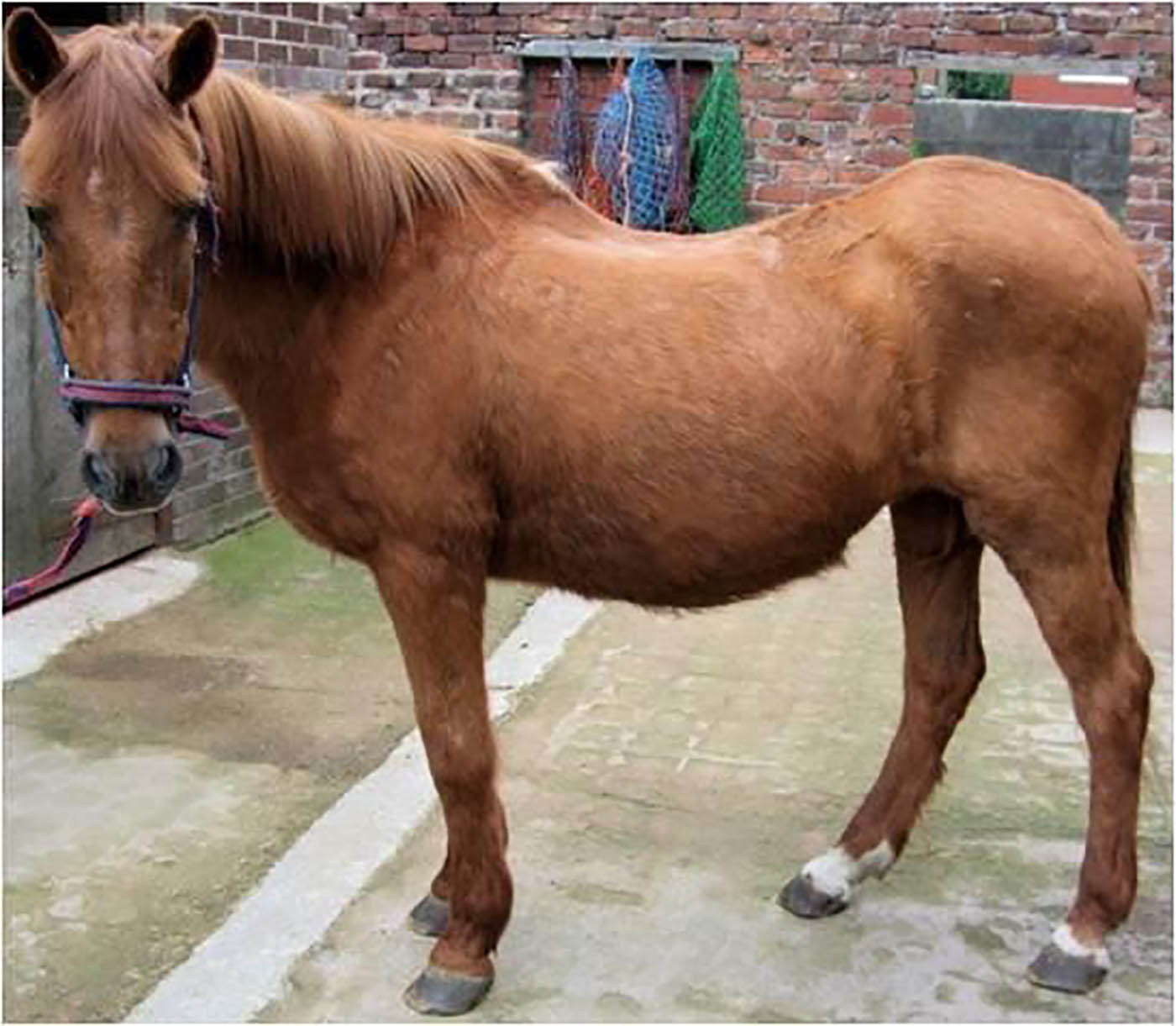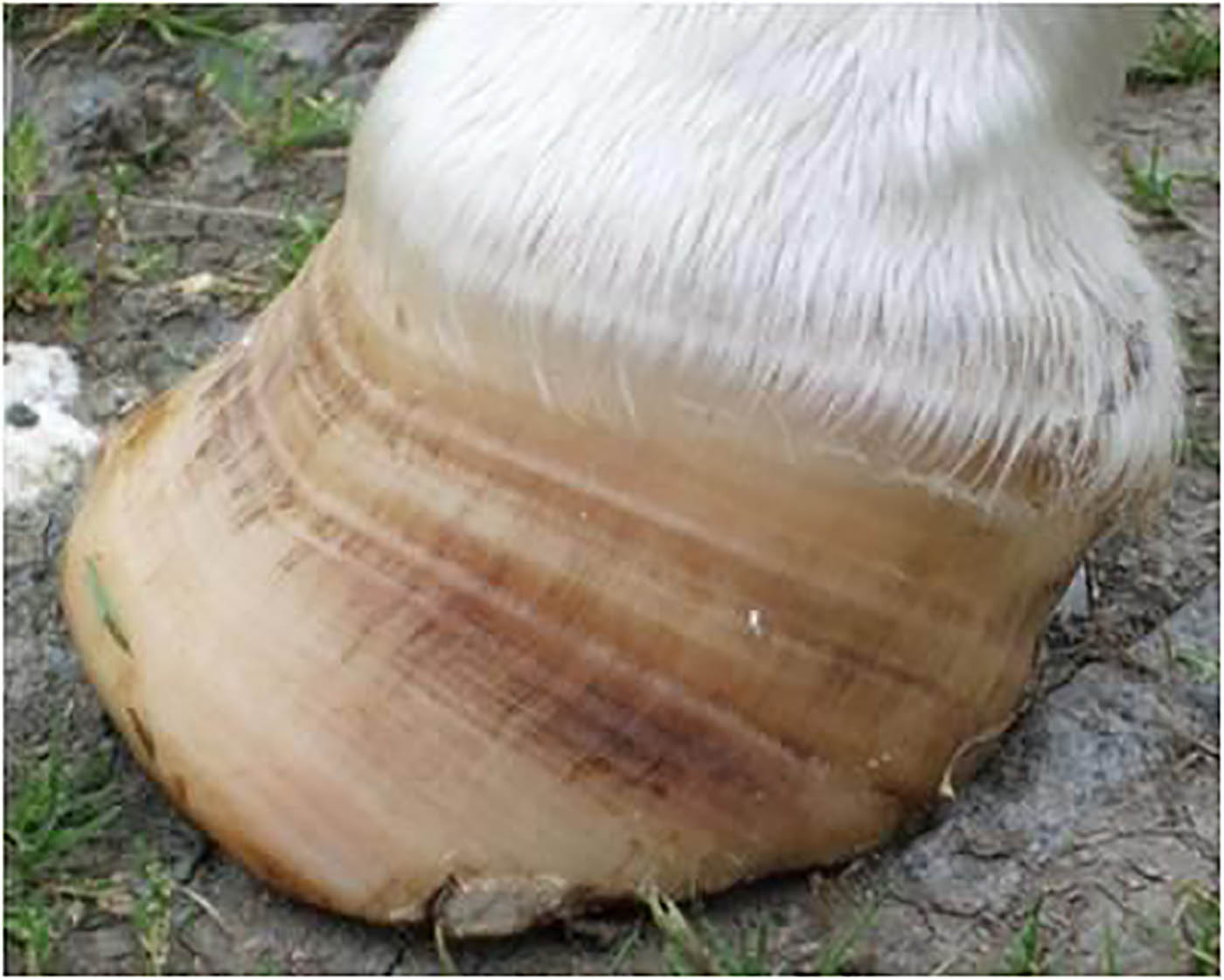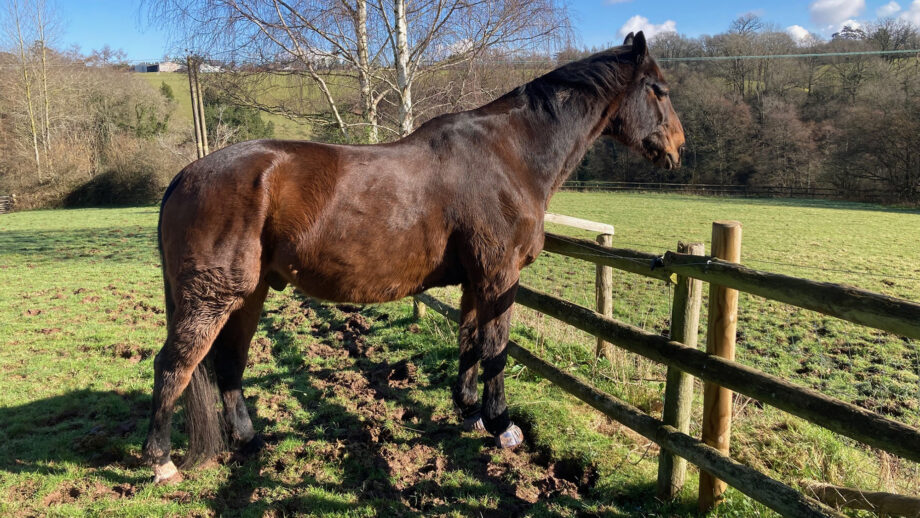Equine Cushing’s disease: what is it | which horses does it affect | signs | diagnosis | treatment | prognosis
Equine Cushing’s disease (also known as Pituitary Pars Intermedia Dysfunction or PPID) is a hormonal disorder with a wide variety of clinical signs from dullness and depression to debilitating laminitis.
It affects older horses, with around one in 10 horses having Cushing’s by the time they reach 10 years of age, making it one of the most common medical conditions to afflict the UK equine population1.
Although it is a lifelong condition that tends to get worse over time, it can usually be managed with proper medication and veterinary care, allowing affected horses to live out normal, happy and healthy lives.
People and dogs can also suffer from a condition referred to as Cushing’s, but while the two disorders share some hallmark signs, the underlying cause in horses is quite different.
What is Equine Cushing’s disease?
Hormones are the vital chemical messengers that help to regulate bodily functions such as metabolism and reproduction. The pituitary gland, sitting at the base of the brain, is responsible for producing many of these hormones under the regulation of a neurotransmitter called dopamine.
With Cushing’s, dopamine production is impaired and pituitary activity becomes deranged, resulting in excessive hormone release. One of these hormones is called ACTH, which is useful when testing for and monitoring the disease.
For more information visit Care About Cushings – Equine Cushing’s disease
Which horses/ponies does it typically affect?
The major risk factor for developing Cushing’s is increasing age2. It is more common in native breeds and less common in thoroughbreds but any older horse or pony of any gender or breed can be affected. It is not understood why some animals are affected and not others, so all owners with horses over the age of 10 should be aware of the signs of the disease.
What are the typical signs?
Cushing’s develops gradually, so it’s easy to miss the subtle, early changes. Many owners mistake signs such as lethargy as part of the normal aging process3, whereas the thick, curly abnormal coat that is highly suspicious for disease is only rarely seen4.
Owners should be on the look-out for one or more of the following:
- Lethargy or ‘slowing down’, poor performance or changes in behaviour such as being less affectionate, less interested in carrots at the gate or playing with their field mates
- Laminitis
- Any coat changes, especially compared to stablemates. Not just long curly hair, but any delayed or patchy shedding
- Excessive sweating
- Weight loss/loss of topline, muscle wastage (which can affect performance and make your horse tire more easily) and changes in fat deposits (a pot belly, cresty neck, tail head fat or fat pads above the eyes)
- Evidence of chronic or recurrent infections like coughing, nasal discharge, repeat foot abscesses or dental infections
- Increased drinking and urination
- Reduced fertility

A loss of topline indicates muscle wastage which can be a sign of Cushing’s

Patchy, abnormal sweating patterns or excessive sweating after low level work in cool temperatures are a possible sign of Cushing’s disease.
Check your horse for signs: www.careaboutcushings.co.uk/how-to-spot-it
Laminitis and Cushing’s disease
Horses with Cushing’s are up to five times more likely to develop laminitis than their age-matched counterparts3. Early detection of laminitis avoids pain and discomfort, costly treatment and time out of work, yet more than half of horse owners struggle to spot the hallmark signs5.
Signs of acute (immediate) laminitis include horses rocking back on their heels, lying down or being apparently stubborn and reluctant to move, while signs of chronic (ongoing) laminitis can include discomfort after the farrier, a pottery gait, divergent hoof rings, and bruising of the soles.

The signs of laminitis can vary from mild changes in the hooves through to severe lameness. Divergent hoof rings (where the gaps between the hoof rings are wider at the heel than the toe) are a sign of laminitis
Look at the checklist for laminitis to find out more about spotting the signs: Care About Cushings – How to spot it
How is Cushing’s diagnosed?
A blood test, checking levels of the hormone ACTH, is required for an accurate diagnosis and to monitor the progression of disease and response to treatment6.
Vets participating in the national Care About Cushing’s testing scheme can provide a free* diagnostic blood test. More information is available at Care About Cushings – What to do next?
Test results require careful interpretation by the vet, considering each patient’s unique clinical history. This means that advice is not always comparable, even between horses with the same test result.
Cushing’s can be challenging to diagnose if blood test results fall into an “equivocal/grey” zone, which can mean that more evidence is required to support diagnosis, so vets may advise repeating the blood test later (particularly in the autumn) or offer an alternative investigation.
Because Cushing’s is age-related, a negative test result doesn’t mean a horse will never suffer from the disease in the future. If your horse develops clinical signs despite passing a previous vet check, ask your vet if they feel a repeat investigation is appropriate
Particularly in horses with laminitis, vets may also strongly recommend testing insulin status. This is because insulin dysregulation is known to be an underlying factor in the majority of laminitic episodes7, and proper management of such underlying problems is essential for successful treatment.
How is Cushing’s treated?
Almost all cases of Cushing’s can be simply treated by giving a daily oral tablet prescribed by a vet6,8. The medication compensates for the horse’s reduced ability to produce dopamine and aims to restore normal pituitary gland function. An improvement in signs is usually seen within six to 12 weeks of beginning treatment. Cushing’s is a lifelong condition and treatment must be maintained for life.
Most horses respond positively to treatment and owners frequently report a speedy improvement in the demeanour of their horses. Because the onset of disease is slow, the sudden improvement in energy levels and restoration of previous personality can seem dramatic. However, it’s important to remember that Cushing’s affects each horse differently and each animal will have a unique response to treatment.
Monitoring a horse with Cushing’s
When medication is first prescribed, vets typically recommend a repeat blood test at four to six weeks to ensure that the correct starting dose is being used. Once a horse is responding well, regular monitoring blood tests can be booked in at longer intervals6.
Yearly monitoring tests may be available free of charge* if your vet is participating in the nationwide Care About Cushing’s testing scheme.
Prognosis
Long-term treatment of Cushing’s-affected horses produces a marked improvement in nearly all cases. In a study following owners and their horses for several years, almost all (96%) said they saw improvement in their horse’s quality of life and the vast majority said they would choose treatment again if they had another horse with Cushing’s8.
To read real life case studies of horses who have been treated for Cushing’s visit: Care About Cushings – What to do next?
To learn more about Equine Cushing’s disease, listen to All about equine Cushing’s disease, with Boehringer Ingelheim | A Horse & Hound Podcast promotional feature
For more information visit: Care About Cushings
*Free laboratory ACTH test fees only. Veterinary practices may apply visit, blood sampling or interpretation fees.
An educational service from Boehringer Ingelheim Animal Health UK Ltd. Further information available from Boehringer Ingelheim Animal Health UK Ltd, RG12 8YS, UK. ©2025. All rights reserved. Date of preparation: Aug 2025. UI-EQU-0110-2025. Use Medicines Responsibly.
References:
1. Blue Cross (2018) National Equine Health Survey (NEHS) available at NEHS-results-2018.pdf (bluecross.org.uk)
2. Ireland, Joanne L., and Catherine M. Mcgowan. “Epidemiology of pituitary pars intermedia dysfunction: a systematic literature review of clinical presentation, disease prevalence and risk factors.” The Veterinary Journal 235 (2018): 22-33.
3. Mcgowan TW, et al. (2013) Prevalence, risk factors and clinical signs predictive for equine pituitary pars intermedia dysfunction in aged horses. Equine Vet Journal. 2013;45(1):74-79.
4. Ireland J, et al. (2012) Comparison of owner reported health problems with veterinary assessment of geriatric horses in the UK. Equine Vet Journal Jan;44(1):94-1005
5. Pollard, D. Et al. (2017). Assessment of horse owners’ ability to recognise equine laminitis: A cross-sectional study of 93 veterinary diagnosed cases in Great Britain. Equine Veterinary Journal, 49(6), pp. 759-766.
6. Menzies‐Gow, Nicola J., Heidi E. Banse, Aimi Duff, Nicholas Hart, Joanne L. Ireland, Edward J. Knowles, Dianne McFarlane, and David Rendle. “BEVA primary care clinical guidelines: Diagnosis and management of equine pituitary pars intermedia dysfunction.”; Equine Veterinary Journal 56, no. 2 (2024): 220-242.
7. Laat, M., et al. (2019). ‘Phenotypic, hormonal, and clinical characteristics of equine endocrinopathic laminitis’ Journal of Veterinary Internal Medicine 33(3), 1456-1463
8. Schott HC 2nd, Strachota JR, Marteniuk JV, Refsal KR. Long-Term Response of Equids With Pituitary Pars Intermedia Dysfunction to Treatment With Pergolide. J Vet Intern Med. 39: e70109. https://doi.org/10.1111/jvim.70109



